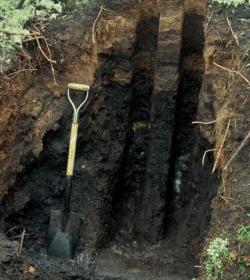 The amount of carbon stored in northern permafrost is more than double that previously estimated, heightening concern that arctic and boreal regions will become future sources of greenhouse gases as the climate continues to warm.
The amount of carbon stored in northern permafrost is more than double that previously estimated, heightening concern that arctic and boreal regions will become future sources of greenhouse gases as the climate continues to warm.
Working for the Global Carbon Project, researchers from Agriculture and Agri-Food Canada, Australia’s CSIRO and the University of Florida found that frozen carbon-rich soils in the northern hemisphere contain more than 1.5 trillion tons of frozen carbon, double that found in the atmosphere.
Thawing of these “super-sized” deposits–containing carbon that has been stored for thousands of years–would release massive amounts of carbon dioxide and methane into the atmosphere, exacerbating the climate warming that led to their release in the first place, said Dr. Pep Candell, executive director of the Global Carbon Project at CSIRO, Australia and co-author of a carbon assessment report recently published in the American Geophysical Union journal Global Biogeochemical Cycles and a radiocarbon study recently published in Nature.
“Permafrost carbon is a bit of a wild card in the efforts to predict future climate change,” Canadell added.
“All evidence to date shows that carbon in permafrost is likely to play a significant role in the 21st century climate given the large carbon deposits, the readiness of its organic matter to release greenhouse gases when thawed, and the fact that high latitudes will experience the largest increase in air temperature of all regions.”
Yet more troubling, the radioactive carbon dating of permafrost samples shows that most of the carbon dioxide now being emitted by thawing soils was deposited thousands of years ago. “The carbon dating demonstrates how easily carbon decomposes when soils thaw under warmer conditions,” said co-author and University of Florida Professor Ted Schuur.



This is frightening news, especially if one takes into account the twists and turns of Climate Change politics. The way things are going, the world has a faint to non-existent chance of preventing two degrees Celsius of warming. And the real tragedy is the 2C has been chosen as a “safe” level only because it just might be politically possible. In reality, this level is much too high. Look out your window; we’re losing the Arctic sea ice right now. Is allowing our planet to keep heating up to 2C going to help that? How can we dare to take the chance of allowing this vast store of frozen methane to escape?
Dorothy,
I agree that what is going on in the Arctic is one of the greatest concerns with climate change. It’s all happening up there so much faster than any of the projections suggested.